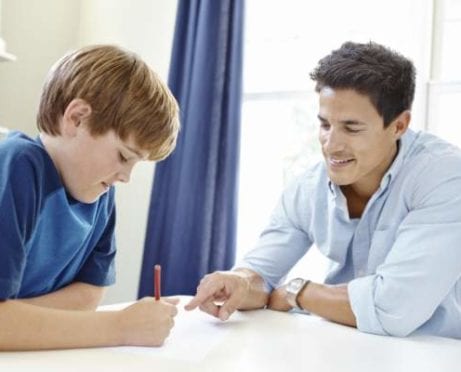
Rita Pouppirt
 Financial literacy for kids can start at a young age and take forms that we don't even recognize until years later.
Financial literacy for kids can start at a young age and take forms that we don't even recognize until years later.
When I was growing up, for example, Halloween was all about costumes, candy, and haunted houses. In my quest for Butterfingers and Peppermint Patties, I braved life-size plastic mummies, graveyards, and spooky music played from porch speakers. Little did I know, this annual tradition was providing me with a lot more than a toothache.
At the end of the night, I sorted all of my candy into piles. I ranked them from favorite to least favorite, then ate one piece from each category. After that, I stored each group of candies in separate containers.
Yes, I was that kid — the one eating Halloween candy at Christmas. So it shouldn’t come as a surprise that I became a meticulous budgeter when I grew up.
Try an Online Financial Planning Service
How Trick-or-Treating Can Help With Financial Literacy for Kids
Budgeting wasn’t the only lesson I learned from trick-or-treating. Somewhere between choosing a Disney princess costume and trading Milky Ways with my brothers, Halloween taught me money lessons that have stuck with me, even after I transitioned from candy collector to candy distributor.
There are so many ways life can teach you about money that you may not even notice at the time that you are, in fact, learning.
Here are some of the money lessons that Halloween taught me:
1. Self-Restraint
As a teenager, I was a bit too old to go trick-or-treating, but I still had Halloween candy cravings. So I waited until November 1, when most candy sold for half price. This taught me that if I know I really want something, but I’m also pretty sure it’s going to be on sale soon, I should wait. I still get the same purchase, but I save some money.
Today, I still wait for sales instead of purchasing something the first time I see it. And even if you're feeling impatient, you can do a little research and actively seek out deals sites.
And considering that Halloween spending is expected to reach $10.14 billion in the U.S. in 2021, it might be smart to use this “wait for sales” strategy to help save on your next Halloween celebrations.
2. Managing Resources and Time
I always picked a trick-or-treating neighborhood with closely clustered houses to maximize my candy “profit” for the night. As an adult, I try to use my resources — savings, income — with the greatest return on investment.
I never ate all of my candy in one night, but plenty of my classmates did, and I knew that they would come to regret it.
I knew it would be better to have a stash in the weeks and months to come. My candy smarts as a kid turned into financial literacy as an adult. Today I make sure not to blow a paycheck or a windfall all at once, and sticking to a budget makes my money last longer.
3. Work Ethic
To get candy, I’d spend the evening speed-walking between houses and humoring adults in “scary” costumes. Most grown-ups gave out candy to everybody, but a good number of them rewarded kids with the coolest costumes by giving them extra treats.
The idea that working hard reaps greater rewards was an important part of financial literacy — something I learned as a kid while trick-or-treating. If you have kids of your own, take a look at Catherine Alford’s ideas on how to motivate your kids to work hard.
Earning candy, like money, requires effort, and the harder you work, the more you’ll bring in.
4. Relative Value
Even though Butterfingers were my favorite candy on the planet, my brothers didn’t like them, so they were worthless in trades. Just because something is valuable to one person doesn’t give it real-world value, and this is still very much true today.
5. Charity
The day after Halloween, my school would collect candy for a local charity that distributed our donations to homeless kids. Growing up with this tradition led me to value sharing some of my adult income with others. The feeling of giving to charity and knowing you’re doing good is something that stayed with me from a young age.
6. Taxes
In exchange for making our costumes and chaperoning us on Halloween night, my parents always requested a few of their favorite pieces of candy out of our stuffed pillowcases.
Today, instead of paying candy to my parents, I pay taxes to the government. That’s another important component of financial literacy for both kids and adults: Nothing good comes for free!
7. Goals
If I went trick-or-treating without a plan, I ended up in neighborhoods without much candy, climbing up steep driveways for a packet of Nerds. As an adult, I find that plans are still important to achieve my financial goals.
I learned that if there is something you really want to attain, whether it’s a packet of candy or a new car, setting goals and making plans are what drive you forward.
Halloween and Financial Literacy for Kids: The Bottom Line
Trick-or-treating not only resulted in a heavy bag of assorted candy, but also a mind full of financial lessons that would stick with me for life. I know that I’ll pass this wisdom down to my own children when the time comes. After all, financial literacy is important for all ages.








![[VIDEO] 5 Travel Tips for a Safe Journey](https://centsai.com/wp-content/uploads/2020/09/iStock-807410094-461x372.jpg)
